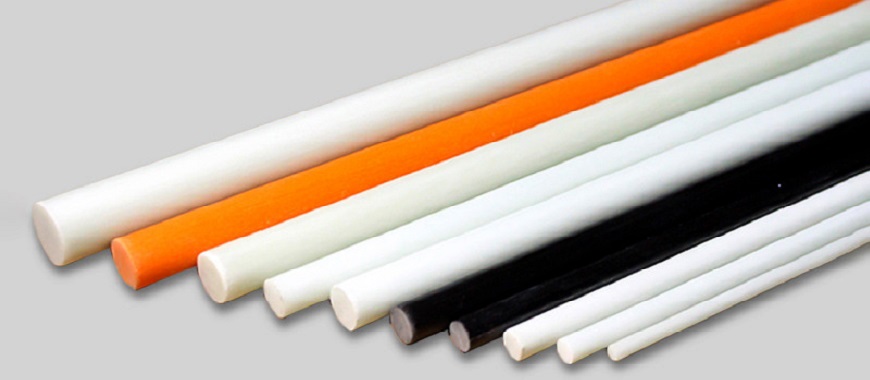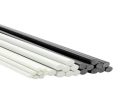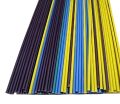
Fly rods with fiberglass feel have gained popularity among anglers seeking a unique fishing experience. These rods offer a blend of sensitivity and performance that many find appealing. The softer action of fiberglass rods enhances casting accuracy, especially for delicate presentations. However, misconceptions exist about their effectiveness compared to graphite or bamboo. Some believe fiberglass rods are outdated or too heavy for modern fishing. In reality, fly rods with fiberglass feel provide distinct advantages, particularly in certain fishing scenarios. Understanding these qualities can help you appreciate the unique charm of fiberglass rods. Embracing this style can lead to a more enjoyable and rewarding fishing journey.
Fly Rods with Fiberglass Feel
Fly rods with fiberglass feel represent a unique segment in the world of fly fishing. These rods are known for their distinct characteristics, making them an appealing choice for many anglers. Their design and performance offer specific advantages that cater to different fishing styles and preferences.
What Are Fly Rods with Fiberglass Feel?
- Definition and Characteristics: Fly rods with fiberglass feel are constructed using fiberglass material, which provides a flexible and soft action. This construction allows for better sensitivity, helping anglers detect subtle bites.
- Unique Features:
- The rods tend to bend smoothly, allowing for delicate presentations.
- They offer a forgiving action that helps improve casting for beginners.
- The sensitivity of fiberglass enhances the overall fishing experience.
- Comparison to Other Materials:
- Bamboo Rods: Bamboo rods are often praised for their aesthetics and tradition. However, they can be heavier and less forgiving than fiberglass.
- Graphite Rods: Graphite rods are popular for their lightweight design and fast action. In contrast, fly rods with fiberglass feel provide a slower action, making them ideal for specific techniques, like dry fly fishing.
- Durability: Fiberglass rods are typically more durable than bamboo and less prone to breakage than graphite, making them suitable for rough handling.
History and Development
Fly rods with fiberglass feel have a rich history that reflects technological advancements in fishing gear. Their evolution post-World War II marks a significant change in fly fishing.
- Evolution of Fiberglass Fly Rods:
- Fiberglass was first introduced in the 1950s as a material for fishing rods.
- Early fiberglass rods were heavier and less refined than today’s models.
- As manufacturing techniques improved, the weight and action of fiberglass rods also improved significantly.
- Key Milestones in Fiberglass Technology:
- In the 1960s, manufacturers started using advanced processes to create lighter, more responsive rods.
- The introduction of multi-modulus materials enhanced the performance of fiberglass rods.
- Recent innovations have focused on creating specialized taper designs, improving the casting experience for anglers.
The advancements in fly rods with fiberglass feel have made them a viable option for various fishing conditions. Their unique characteristics allow anglers to enjoy a different fishing style that emphasizes finesse and technique. Understanding these factors will help you appreciate the charm of fiberglass rods and the benefits they bring to the fishing experience.
Optimal Grip Length Fiberglass Fly Rod for Comfort
Advantages of Fly Rods with Fiberglass Feel
Fly rods with fiberglass feel offer a range of advantages that make them appealing to anglers. Their unique characteristics enhance the fishing experience, making them suitable for various techniques and preferences. Understanding these benefits can help you decide if they are the right choice for your fishing needs.
Casting Experience
One of the most notable advantages of fly rods with fiberglass feel is their casting experience. The construction and design of these rods provide unique sensations that many anglers appreciate.
- Unique Casting Sensations:
- Fiberglass rods typically offer a softer, more forgiving action.
- Anglers often feel a pleasant flex when casting, promoting a smooth delivery.
- The slower action allows for better timing and rhythm during casts.
- Benefits for Delicate Presentations:
- Fly rods with fiberglass feel excel in delicate presentations, especially with dry flies.
- The gentle action reduces the chance of spooking fish during the cast.
- Anglers can achieve a softer landing on the water’s surface, increasing catch rates.
- Ideal for Beginners:
- New anglers benefit from the forgiving nature of fiberglass rods.
- The enhanced feedback allows for easier learning of casting techniques.
- They help build confidence by reducing the likelihood of mishaps.
Performance Features
The performance features of fly rods with fiberglass feel contribute significantly to their appeal. Understanding these features can enhance your fishing strategy.
- Sensitivity and Line Protection:
- Fiberglass rods provide excellent sensitivity, allowing anglers to feel even the slightest bites.
- The rod bend acts as a shock absorber, protecting the line during fights.
- This sensitivity helps detect subtle changes in water currents and fish behavior.
- Power Dynamics and Rod Rebound:
- Fly rods with fiberglass feel demonstrate a unique power dynamic compared to other materials.
- The action of the rod allows for a delayed rebound, which aids in casting longer distances.
- This rebound effect can create a unique “loading” feeling, enhancing casting control.
- Adaptability to Various Conditions:
- Fiberglass rods perform well in windy conditions due to their weight and action.
- They allow for precise casting, even in challenging environments.
- Anglers can adapt their techniques to suit specific water types and fish species.
Challenges and Considerations
While fly rods with fiberglass feel have many advantages, it’s essential to consider some challenges as well.
- Weight Considerations:
- Fiberglass rods can be heavier than their graphite counterparts, which may be a drawback for some anglers.
- Long fishing sessions may lead to fatigue if the rod weight is not balanced.
- Handling Larger Fish:
- The softer action can make it more challenging to control larger fish during fights.
- Anglers may need to adjust their techniques when targeting larger species.
Fly rods with fiberglass feel offer a range of benefits that enhance the fishing experience. Their unique casting sensations, sensitivity, and adaptability make them a preferred choice for many anglers. While they do present some challenges, the advantages often outweigh the drawbacks. By understanding these factors, you can make informed decisions and enjoy the art of fly fishing to its fullest.
Disadvantages of Fly Rods with Fiberglass Feel
While fly rods with fiberglass feel offer many benefits, they also have certain disadvantages that potential users should consider. Understanding these limitations can help anglers make informed choices about their equipment.
Limitations in Performance
The performance of fly rods with fiberglass feel can present challenges in specific scenarios. Here are some key limitations that may affect their usability.
- Wind Resistance Challenges:
- Fiberglass rods typically have a slower action, making them less aerodynamic.
- In windy conditions, these rods can struggle to cast effectively.
- Anglers may need to adjust their casting techniques to combat the wind.
- Competing with lightweight graphite rods in gusty weather can be difficult.
- Handling Larger Flies and Fighting Big Fish:
- The soft action of fiberglass rods can hinder casting larger flies effectively.
- Anglers may find it challenging to achieve the necessary power for bigger flies.
- Fighting larger fish can also pose difficulties; the bend in the rod may limit control.
- Experienced anglers may need to exert extra effort when reeling in larger species.
- Weight Considerations Compared to Graphite Rods:
- Fly rods with fiberglass feel tend to be heavier than their graphite counterparts.
- The added weight can lead to fatigue during long fishing sessions.
- For anglers who prefer ultra-light gear, this could be a significant drawback.
- Balancing the rod properly becomes crucial to enhance comfort during use.
Additional Considerations
Beyond performance limitations, there are other factors to keep in mind when using fly rods with fiberglass feel.
- Flexibility vs. Stiffness:
- The flexibility of fiberglass can be a double-edged sword.
- While it offers sensitivity, it may lack the stiffness needed for certain techniques.
- Anglers might find it challenging to achieve quick hook sets with softer rods.
- Sensitivity in Strong Currents:
- In fast-moving waters, the sensitivity of fiberglass may not be ideal.
- Detecting bites in turbulent conditions can become difficult.
- Anglers may prefer stiffer rods that provide better feedback in these scenarios.
Case Studies and Research
Several studies and anecdotal evidence support the understanding of fiberglass rods’ limitations.
- Field Research:
- Anglers in various conditions have reported struggles with wind when using fiberglass rods.
- In competitions, many opt for graphite rods to gain an edge in performance.
- Expert Opinions:
- Experienced anglers often recommend fiberglass for specific techniques, like small stream fishing.
- However, they also emphasize the importance of knowing when to switch to a different material.
While fly rods with fiberglass feel present unique advantages, they also come with notable disadvantages. Challenges such as wind resistance, handling larger flies, and weight should be considered. Understanding these limitations will help anglers select the right rod for their fishing style and conditions. By weighing the pros and cons, you can enjoy a more tailored and effective fishing experience.
Why the Yellow Fiberglass Fly Rod Is Essential Gear
How to Fish with Fly Rods with Fiberglass Feel
Fishing with fly rods with fiberglass feel requires specific knowledge and techniques to maximize their advantages. Understanding how to choose the right rod and master your casting technique can lead to a more enjoyable experience.
Choosing the Right Rod
Selecting the appropriate rod is crucial for successful fishing. Here are some guidelines for choosing the right fly rods with fiberglass feel.
- Guidelines for Selecting Rod Weight:
- Consider the type of fish you plan to target. Lighter rods are better for small fish, while heavier rods suit larger species.
- For trout, a 3 to 4 weight rod often works well, providing sensitivity and control.
- If you are targeting bass or larger fish, opt for a 6 to 8 weight rod to handle increased power.
- Take into account the type of flies you will be using. Larger flies may require a heavier rod to cast effectively.
- Ideal Fishing Conditions for Fiberglass Rods:
- Fiberglass rods excel in calm or lightly breezy conditions, making them perfect for still waters.
- They perform well in small streams and rivers, where delicate presentations are vital.
- When fishing in clearer waters, the sensitive nature of fiberglass rods helps detect subtle bites.
- Avoid using fiberglass rods in extreme winds, as their slower action can hinder performance.
Mastering Techniques
Once you have selected the right rod, mastering casting techniques is essential. Here are some tips for effectively using fly rods with fiberglass feel.
- Tips for Mastering a Slower Casting Stroke:
- Fiberglass rods require a more relaxed casting stroke compared to graphite.
- Focus on smooth, gradual movements to maintain control and accuracy.
- Start your cast slowly and gradually increase speed at the end of the stroke.
- Practice double-hauling to gain extra distance while maintaining accuracy.
- Adapting to the Unique Feel of Fiberglass Rods:
- Pay attention to the rod’s bend during casting; this feedback is vital for accurate presentations.
- Learn to read the rod’s action to adjust your casting technique effectively.
- Take time to familiarize yourself with the rod’s response to different casting styles.
- Consider practicing with various line weights to find the best match for your rod.
Additional Techniques for Success
In addition to mastering casting, various techniques can enhance your fishing experience with fiberglass rods.
- Perfecting Your Presentation:
- Use a roll cast to present flies gently on the water’s surface.
- Focus on casting short distances to improve accuracy, especially in tight spaces.
- Experiment with different leader lengths to find the optimal presentation.
- Understanding Fish Behavior:
- Learn about the feeding patterns of the fish species you are targeting.
- Observe water conditions and adjust your techniques based on current behavior.
- Be patient and ready to adapt your approach as needed.
Case Studies and Examples
Real-world examples can illustrate the effectiveness of fly rods with fiberglass feel in various fishing situations.
- Small Stream Fishing:
- Anglers report success in small streams using lightweight fiberglass rods.
- The sensitivity allows for detecting bites in challenging currents.
- Delicate Dry Fly Fishing:
- Many anglers prefer fiberglass rods for dry fly presentations.
- The gentle action helps in casting without spooking fish.
Fishing with fly rods with fiberglass feel can be a rewarding experience if approached with the right techniques and knowledge. Choosing the appropriate rod weight and understanding fishing conditions are vital steps. Additionally, mastering your casting techniques and adapting to the unique feel of fiberglass rods will enhance your success on the water. With practice and patience, you can fully enjoy the art of fly fishing and leverage the unique advantages that fiberglass rods provide.
Youth Fiberglass Fly Rods: Perfect for Young Anglers
Embracing the Fly Rods With Fiberglass Feel
Fishing with fly rods with fiberglass feel offers a unique journey into the art of angling. Embracing this experience can lead to a deeper appreciation for the craft of fly fishing. Understanding the nuances of fiberglass rods allows anglers to connect with nature and enhance their skills.
Reflection on the Stylistic Journey of Fly Fishing
The journey of fly fishing is not just about catching fish. It involves a blend of technique, patience, and style.
- Artistry in Technique:
- Fly rods with fiberglass feel encourage a more refined casting style.
- The slow action requires a gentle touch and finesse, promoting skill development.
- Connection with Nature:
- Using fiberglass rods can foster a greater appreciation for the environment.
- Anglers often find joy in the serenity of fishing with a classic rod.
- Personal Style:
- Many anglers develop their own style while using fiberglass rods.
- The unique characteristics of these rods allow for personalized techniques.
Encouragement to Appreciate the Qualities of Fiberglass Rods
Fiberglass rods have specific qualities that make them worthwhile for any angler. Acknowledging these attributes can enhance your overall fishing experience.
- Sensitivity and Feel:
- Fly rods with fiberglass feel provide excellent sensitivity for detecting bites.
- The soft action enhances the enjoyment of the fishing process.
- Durability and Forgiveness:
- Fiberglass rods are often more durable than graphite or bamboo.
- Their forgiving nature makes them ideal for beginners and seasoned anglers alike.
- Variety of Applications:
- These rods excel in various fishing environments, from small streams to still waters.
- They perform particularly well in delicate presentations, such as dry fly fishing.
Embracing the fiberglass experience in fly fishing can lead to greater fulfillment. Fly rods with fiberglass feel encourage skill development and personal expression. They invite anglers to connect with nature while enjoying the unique advantages they offer. By appreciating the qualities of fiberglass rods, you can enrich your fishing journey and cultivate a deeper passion for the sport.
FAQs about Fly Rods With Fiberglass Feel
Yes, fiberglass fly rods are often worth the investment for many anglers. They offer a unique casting experience and great sensitivity. Many users appreciate their flexibility, which can enhance the fishing experience. Fiberglass rods excel in delicate presentations, making them suitable for dry fly fishing. They are often more forgiving, which is beneficial for beginners. Additionally, their durability makes them a long-lasting option. While they may not be as lightweight as graphite, their unique properties can compensate for that in specific fishing situations. Ultimately, the worth of fiberglass rods depends on individual preferences and fishing styles.
Whether fiberglass rods are better than graphite rods depends on your fishing needs. Fiberglass rods provide a slower action, which can enhance accuracy and presentation. They are ideal for delicate casts, especially in calm conditions. Graphite rods, however, are typically lighter and offer faster action. This can lead to better performance in windy situations or when using larger flies. Each material has its own advantages, and the choice often comes down to personal preference. Many anglers enjoy having both options in their arsenal to suit different fishing environments.
Yes, fiberglass rods are generally considered slow action compared to graphite rods. Their construction allows for a softer bend, which contributes to their unique feel. This slow action enables better control during casting, especially for beginners. It also allows for delicate presentations, which are essential in fly fishing. The slower action can absorb sudden movements, reducing the risk of breaking the line. However, this characteristic may not be ideal for all fishing situations. Anglers targeting larger fish might prefer faster-action rods for quicker hook sets. Understanding your fishing style can help you determine if a slow-action rod is right for you.
Fishing with a fiberglass fly rod offers several advantages. Many anglers appreciate the sensitivity and flexibility of these rods. This makes it easier to detect bites, enhancing the overall fishing experience. The slower action of fiberglass rods allows for delicate casts, which is beneficial when targeting skittish fish. Additionally, they provide a forgiving nature, which can help beginners learn casting techniques. Fiberglass rods are also known for their durability, making them suitable for various environments. Whether you’re fishing in small streams or still waters, fiberglass rods can perform well in many conditions. Overall, fishing with a fiberglass fly rod can lead to a rewarding and enjoyable experience.

As the editor of GangLong Fiberglass, I have years of experience and in-depth research, focusing on cable tray products, fiberglass solutions, and grille systems. I incorporate years of industry insights and practical experience into every content, committed to promoting the progress of the industry. At GangLong Fiberglass, my commitment is reflected in every product, from innovative cable trays to durable fiberglass solutions and sturdy grille systems. As an authoritative voice in the industry, my goal is to provide valuable information to professionals and businesses and promote forward-looking solutions.


